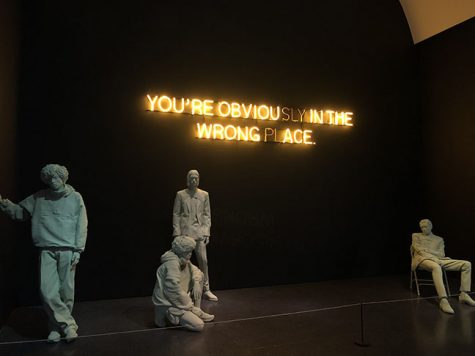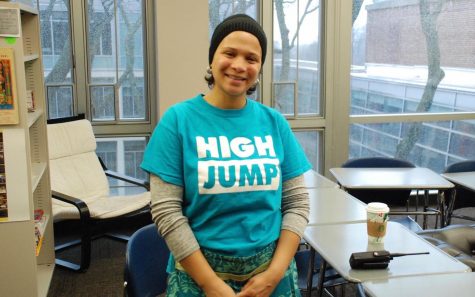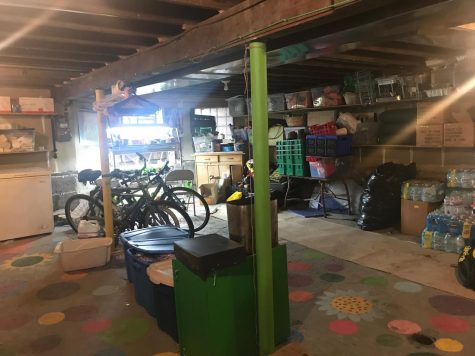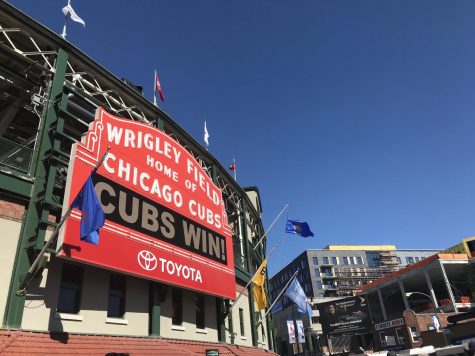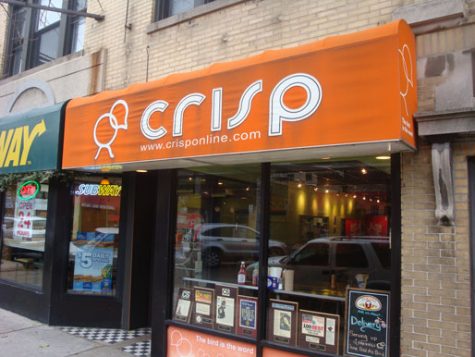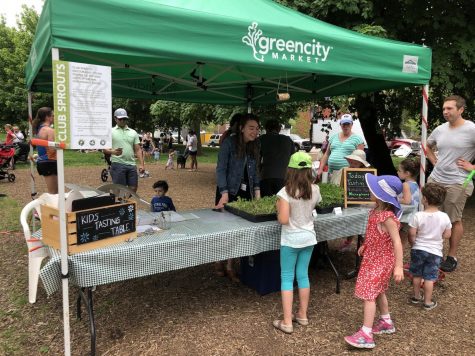Living History
The Margaret Day Blake Assisted Living Facility
Just down the street from Parker is a plain-looking red brick building with a small yard on either side. These are the Margaret Day Blake apartments. An eight story public housing facility serving low-income elderly residents while allowing them to live independently, 2140 North Clark is home to a cast of characters.
The building was the site of the St.Valentine’s Day Massacre in 1929 as a part of an illegal bootlegging operation in the garage that used to occupy the lot. Crime and ghost tours drive by often, and many attempt to sneak into the yard. The building now includes a community room for meetings and entertainment, an adjacent parking lot for residents, and 24-hour security. The only way to get in without being family of a resident is through volunteer organizations, and the atmosphere in the room when they do come is far from haunted.
On the last Saturday of every month since 2005 a group of volunteers from the organization Chicago Cares has come to serve a free breakfast and play bingo with the residents. As for the bingo prizes, they’re also meant to be budget relief items. According to Rosie Drumgoole, the Director of Ongoing Volunteer Programs at Chicago Cares, “If they win, and we provide them with a dish soap, that’s a couple of dollars that they can spend somewhere else, whether it’s towards food or medication or whatever else they want to spend it on.”
The goal of this program, Drumgoole said, is to “decrease isolation among the senior population.” Studies show that seniors who have a stronger social network tend to live longer, happier lives, according to Drumgoole.
The community of elders is clearly close. There are separate social groups that sit at tables together, but most communication aside from that comes by yelling across the room. Some residents don’t see each other often, many question each other on how their week was going so far, but many spend time in each other’s one-room apartments–cooking, checking in on sick friends, and trading movies as well as stories.
On a recent Saturday as preparation for the breakfast starts, the residents began to arrive.
Ms. Adams (the only name she was willing to give) is a 79 year old African American woman with no teeth. Through her gums, she smiled radiantly and greeted the room with a “Good morning, everyone. How’d y’all sleep?”
Later, she explained that she was born in Jackson, Mississippi during the Great Migration. She got pregnant in high school, and her parents made her go to school until she went into labor. After that, she dropped out to work and care for her daughter. She came to Chicago because the food stamps were better here, a result of better state funding, and she was working three jobs to support her daughter and niece.
Adams sat down next to her closest friend, Karen, a woman with a gray buzzcut decked out in Cubs paraphernalia reading a James Patterson novel. They laughed together as Adams made a “zhoop zhoop zhoop” noise to reference how fast Karen moves. “Girl, you better slow your roll,” Adams said.
Rents in the building depend on residents’ incomes–in most cases, it’s one-third of their income adjusted for out-of-pocket medical expenses.
Later in the day, Karen acknowledged how lucky they are to get public housing in such a nice location. “I walk to the zoo every day,” she said. “Then I can also get to work on just one bus.” She works at Wrigley Field in the security department, which is surprising, given that she is around 5’4” and weighs a little over 100 pounds.
There is an endless variety of stories to hear in the room. One table over from Karen and Adams sat Louis Peterson, a lanky man in a flannel shirt. He was explaining to the head volunteer, Hillarie Rovi, that he’d walked out in the middle of a screening of “Moonlight,” the Oscar-winning movie about a young African American boy coming to terms with his sexuality. Peterson said the “themes in the movie offended” him.
While some of the volunteers have heard of Parker, few of the residents have. A resident named Jasmine explained that she gets lonely and would appreciate a visit. “It’s like having an extension of your family,” one volunteer says. “It’s like having a bunch of grandparents all over the city.”
And it’s not as if the residents are lacking wisdom to share. “You know what, girl?” Adams said to me, “You be you, and you don’t let anybody change that. And you listen to your momma. Cause she knows what’s right.”
Shanti Elliott, head of Civic Engagement, has tried unsuccessfully to get access to the building for the school. “I tried to get in touch with them in the past,” Elliott said, “and didn’t have any success.”
Drumgoole said it’s possible for Parker students to get involved. “You can create your own account on Chicagocares.org and monitor your own service profile,” she said. “It’s just that simple.”



